The National Marine Fisheries Research Institute (NMFRI) will participate during the years 2016-2018 in the TABACOD international research project funded by a private foundation BalticSea2020, which supports the activities affecting the improvement of the Baltic Sea environment by 2020. The main objective of the project is to obtain information on the migration of cod, as well as the data on the growth of fish of this species, which will solve the problem of determining the age of the Baltic cod. Reliable assessment of the variability of the cod stocks is necessary to manage them, and cod age determination is of major importance for the stock assessment. The reliability of cod age reading has been a subject of discussion for a long time, as the growth rate of these fish in the eastern part of the Baltic Sea has declined. The visibility of rings (winter and summer increments) in an otolith (limestone part of the organ of balance) significantly deteriorated, leading to unrealistic age estimation. The ambiguity of data results in imprecise estimates of the state of stocks issued by the International Council for the Exploration of the Sea (ICES). Starting from 2014, these data are so uncertain that the question of fishing quotas recommended by the European Commission for the eastern cod stock is based by ICES on the principle of a precautionary approach. However, this rule does not guarantee the size of catches falling within the limits of sustainable exploitation. In the project TABACOD, the researchers want to determine the age and growth rate of cod in order to enable reliable assessment of the state of resources. For this purpose, they will use the results of historical tagging realized on a large scale and combine it with the results of the aforementioned project.
In the course of the project implementation, about 18,000 cod will be marked with external tags, along with chemical labelling of otoliths. The return of externally tagged fish is a cost-effective method of measuring the growth rate of cod, but depending on the condition of re-caught fish (e.g. low growth rate), external tagging may not provide relevant data. Chemical tagging (harmless to the health of fish and people) is reflected in a growing otolith in a form of a ring placed at the moment of tagging. This allows scientists to investigate the otolith growth after re-capture from the moment of tagging, thus giving information on the growth rate of the fish, regardless of its condition at the catch moment (alive, dead or frozen after storage by a fisher or angler). Another 1,000 cod will be marked with DST (Data Storage Tags) type tags recording the depth and water temperature in which cod inhabited. Thus, scientists will be able to reconstruct the patterns of movement and behaviour of cod in the sea, i.e. factors which may affect the growth rate. The final stage of the project is the development and validation of a method that can be used to determine the growth rate of cod in time in the eastern Baltic. The study of the chemical composition of an otolith, using data from historical tagging, will serve as a basis for developing a method, which will subsequently be validated using the new data obtained by the project implementation.
The NMFRI will realize first cruises of the Tagging Baltic Cod project during the current year. In the course of their duration it has been planned to tag a total of 1,500 cod. The key to success of the project is the largest possible number of returns of cod marked with tags. It is therefore extremely important to cooperate with fishers and anglers, on whom the number of recovered labelled cod and tags depends. Due to the chemical tagging, it is necessary to recover the whole cod (together with a tag), as observations of an otolith under a fluorescence microscope allow the identification of a ring formed through the chemical tagging. Further information is available on the project website www.tabacod.dtu.dk



